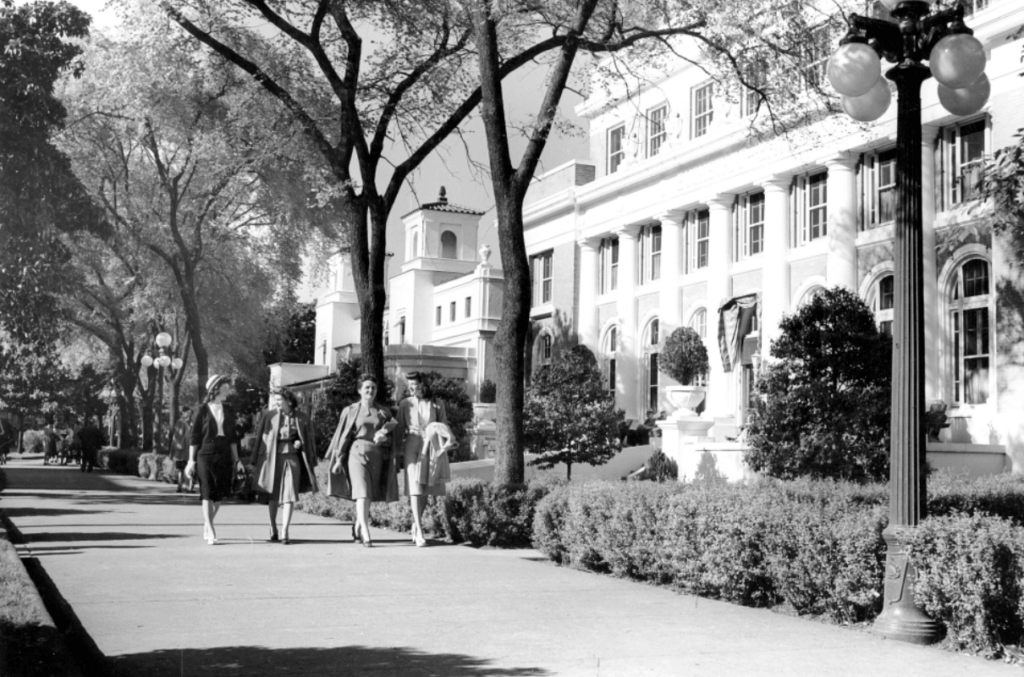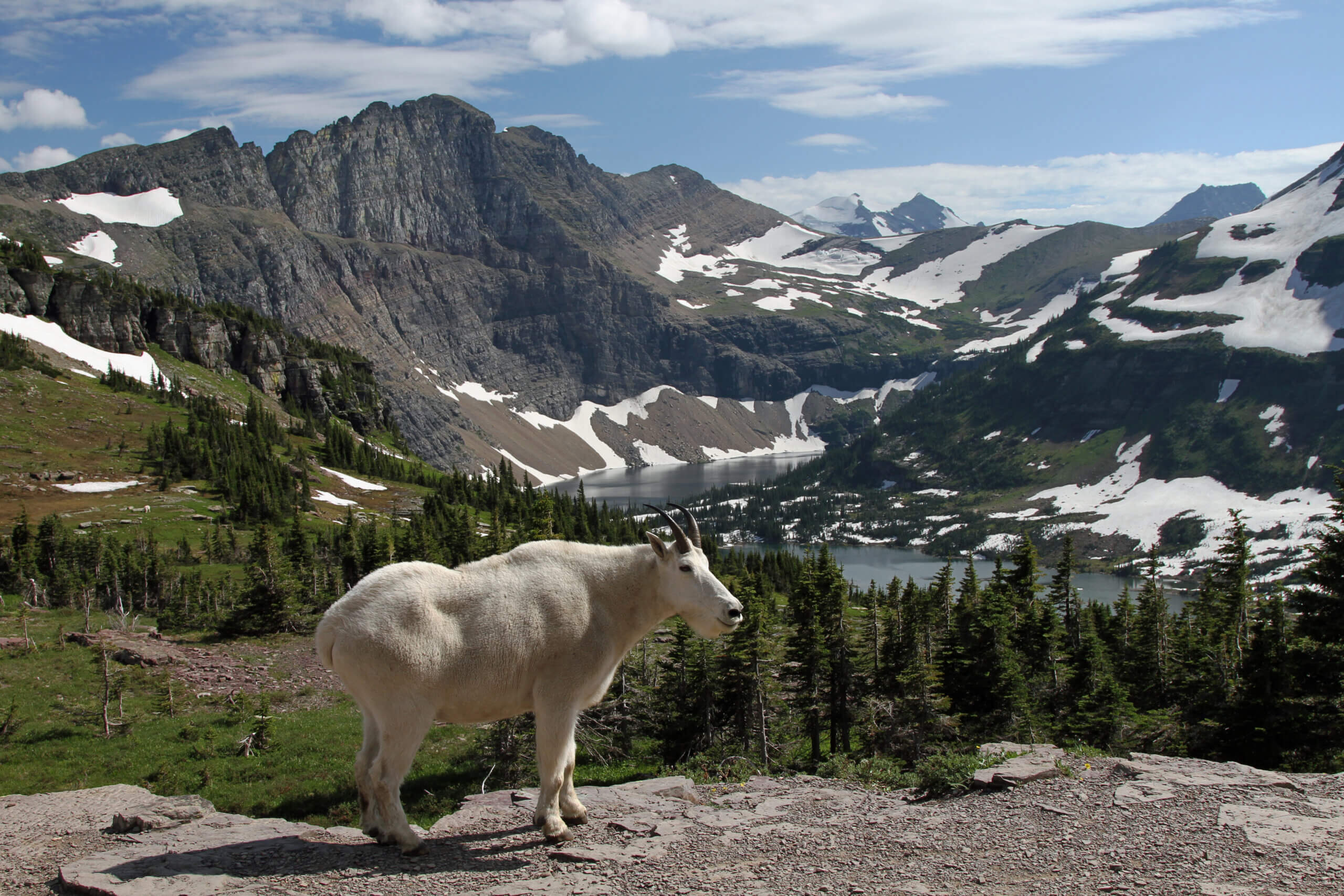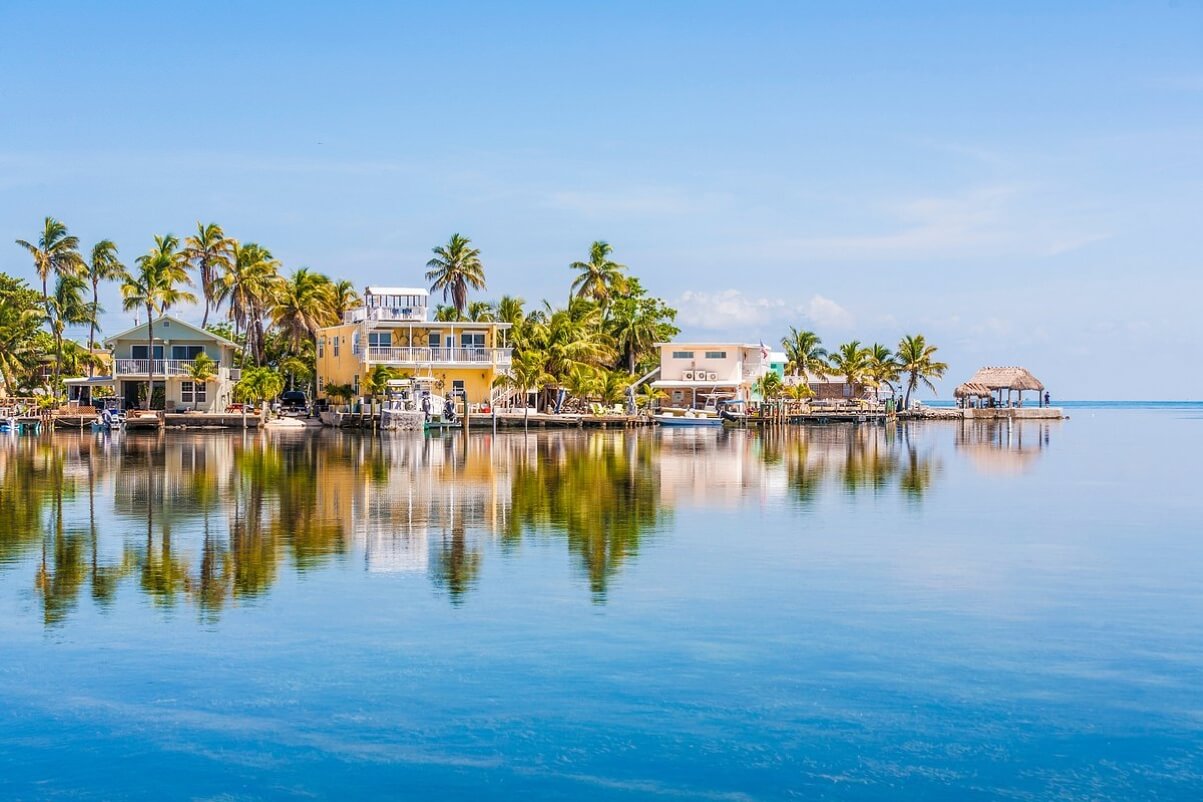Hot Springs Arkansas is renowned for Bathhouse Row, a collection of bathhouses built in the late 1800s to early 1900s. Add to that the fact it is part of a 5500-acre US National Park and you’ve ticked the boxes for a perfect historical, cultural and nature-centered getaway.
All the bathhouses on Bathhouse Row were built right over natural hot springs, which siphoned the hot mineral water into their properties for guests to enjoy- it was a competitive time to see who could draw in the most clientele for a soak!
In this article, we’ll take a look at the history of Bathhouse Row, as well as what you can enjoy there today, including where to get your dose of hot spring soaking, where you can stay, and what else there is to explore nearby.
What To Expect
In the early 1900s, all eight of the bathhouses that you see on Bathhouse Row in Hot Springs Arkansas were functioning businesses. What you’ll see there today, however, consists of only two operational bathhouses where you can soak in the thermal mineral waters- the Quapaw and the original-style Buckstaff Bathhouse. As the whole town gets its water from the springs, though, there are some hotels offering overnight guests the chance to sample the waters too. The other original bathhouse buildings have been repurposed, and we’ll go into that in more detail below. Do take the time to pop into even those buildings which are no longer used as bathhouses – it’s like a peek into the past!
How To Get There
From the nearest city of Little Rock, Arkansas, 52 minutes and 54 miles away, take the I-630 W to Exit 8A leading onto I-430 S. From here, take Exit 129B onto I-30 W heading to Texarkana. At Exit 111, join the US-70 W toward Hot Springs. Once there, follow signs to Bathhouse Row (right on Spring Street).
Interesting History

Hot Springs Arkansas began to earn its reputation when settlers discovered the numerous hot springs in the area in the 1800s (though Native Americans had been using the sacred mineral waters for centuries before them). The first discoveries by Europeans led to a “gold rush” – with eager money-makers flocking there to set up shop. Realizing this, the government made the town into a protected area so people would not destroy the natural state of the springs.
The first bathhouses were simple structures of canvas and wood – tents pitched over individual springs or pools carved out of the rock. Later came wooden structures, though as these frequently burned, collapsed, or rotted due to continued exposure to high temperatures and humidity, it was decided that more resilient and fireproof structures were needed.

Eight bathhouse buildings were constructed between 1892 and 1923 along the Grand Promenade, which was designated a National Historic Landmark District in 1987. Soon after, Hot Springs was designated as a National Park.
At first, Hot Springs Creek flowed in front of the bathhouses, but this was later covered due to pollution, areas of stagnation, and dangerous spring-run overflows.

Due to declining popularity, the Fordyce Bathhouse was the first to close in 1962, followed by the Maurice, the Ozark, and the Hale in the 1970s. In 1984, the Quapaw and the Superior closed. When the Lamar closed in 1985, it left only the Buckstaff still operating on Bathhouse Row. Yet, the past decade or so has seen them either reopening as-was (with remodeling), or repurposed, with a second “gold rush” – though carefully controlled, considering the protected status of the area – seeing folks setting up the right tourism infrastructure for a new boom of interest in the historical site.
Let’s explore the bathhouses of Bathhouse Row. We decided to include more historic photos than modern to give you a sense of the historic grandeur. See if you can spot the changes made to the buildings as you walk.
The Lamar Bathhouse

With the biggest lobby on the Row, the Lamar was built in 1923 and offered guests marble bathtubs of varying lengths to accommodate those of different heights, and a coed gymnasium. It was named in honor of the former US Supreme Court Justice, Lucius Quintus Cincinnatus Lamar. The first version of the bathhouse was built in 1888. Murals and stenciling were added to the interior in the 1920s by Danish muralist J. W. Zelm to give it a popular European feel.
Today, the Lamar is home to the Bathhouse Emporium – the Row’s gift shop, as well as Park Administration and a small research library. Grab the chance to have a photo taken in one of the original bathtubs (something you can’t do even if you soak in Buckstaff, as photography is respectfully prohibited).
Open: Daily, 9am – 5pm.
The Buckstaff Bathhouse
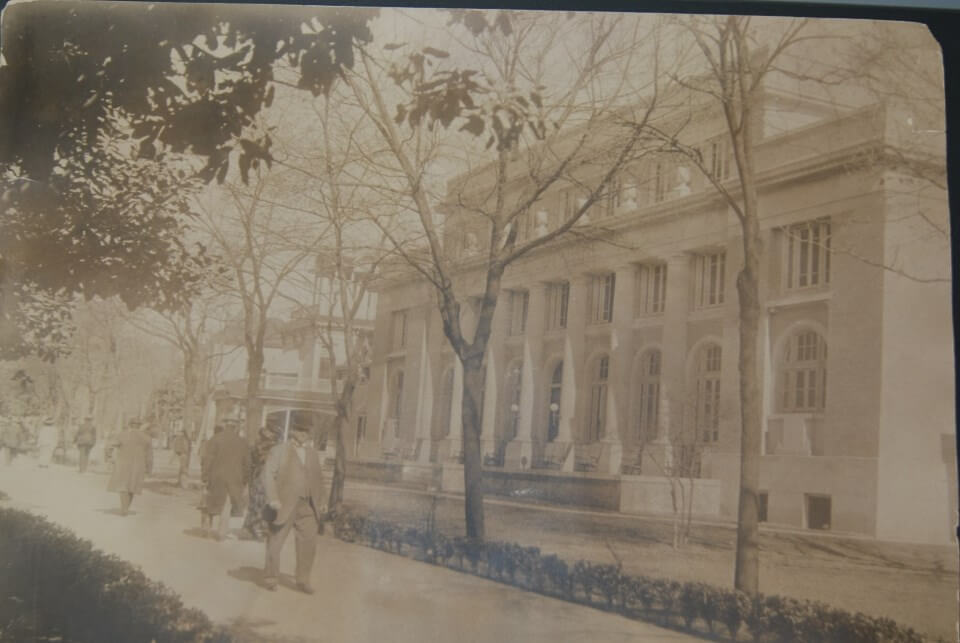
Built in 1912 in the Roman Gothic style, replacing the former Rammelsberg Bathhouse, a brick Victorian structure (which itself replaced two earlier bathhouses), Buckstaff was named for shareholders George and Milo Buckstaff.
It is the only bathhouse on the Row to have been in operation non-stop since its foundation, and is a true step-back in time for the 1000 guests who can derobe there each day. All its bathtubs and equipment are original, with all the mineral stains you’d expect (though everything is carefully sanitized between uses), and while it offers the services we’d want from a 21st-century spa, such as manicures, pedicures, facials, massages and the like, we very highly recommend you take the plunge with a $90 Traditional Bathing Package – “an adventure in indulgence” offering personalized service and care.
The Traditional Bathing Package
Buckstaff has a traditional hydro therapy program developed by local physicians which seeks to provide an escape from the pains of arthritis and stress. It has changed only a little since it was created in 1912, and today offers a safe opportunity to get the most out of the local mineral waters.
Men and women are separated throughout the old-school bathing process, as it was back in the old days. First, you must undress completely and wrap up in a robe. You will be naked throughout the experience, with just the towel to wrap around you as you travel between the various therapy spots. When you’re ready, you’ll be guided by your personal attendant to an original cast-iron Whirlpool tub, separated from others by a curtain, where you can rest and soak up the relaxing vibe for around 20 minutes, during which time your attendant will come and scrub you with a loofa to get your circulation going.
Next comes the hot towel treatment, where you’ll be wrapped from head to toe with hot towels with a cool towel for your forehead. Sigh!
After that, you’ll get 10 minutes in a shallow sitz bath, seeing you sitting in mineral water with your legs and upper half out of the tub – the idea being to relax your back and hips.
Then it will be time for 5 minutes of sweating in a famed 19th century “steam cabinet,” metal boxes that you sit in with just your head poking out that are filled with steam from the hot spring flowing below.
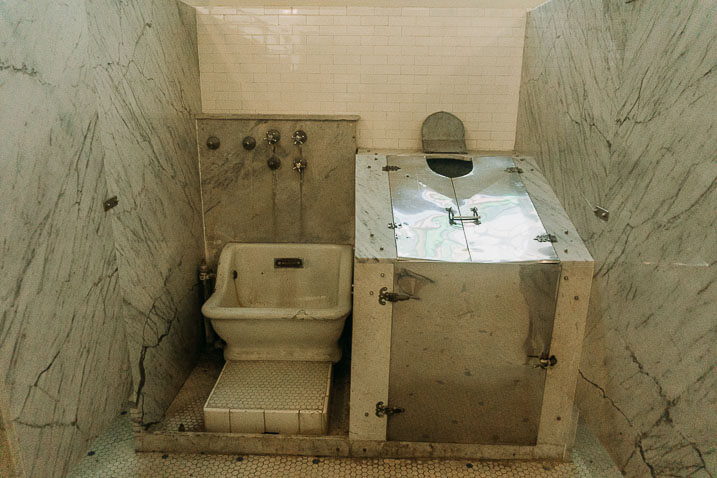
The last treatment of the process is the “needle shower”, which sounds painful but is actually equal parts enlivening and relaxing.
The cooling room is your last step of the day, where you can sit for up to 20 minutes to do just as it says – cool down.
You can also throw in some extras while you’re there with a Swedish Massage or Paraffin Wax.
Website: buckstaffbaths.com
Open: Daily 8am – 3pm.
Ozark Bathhouse
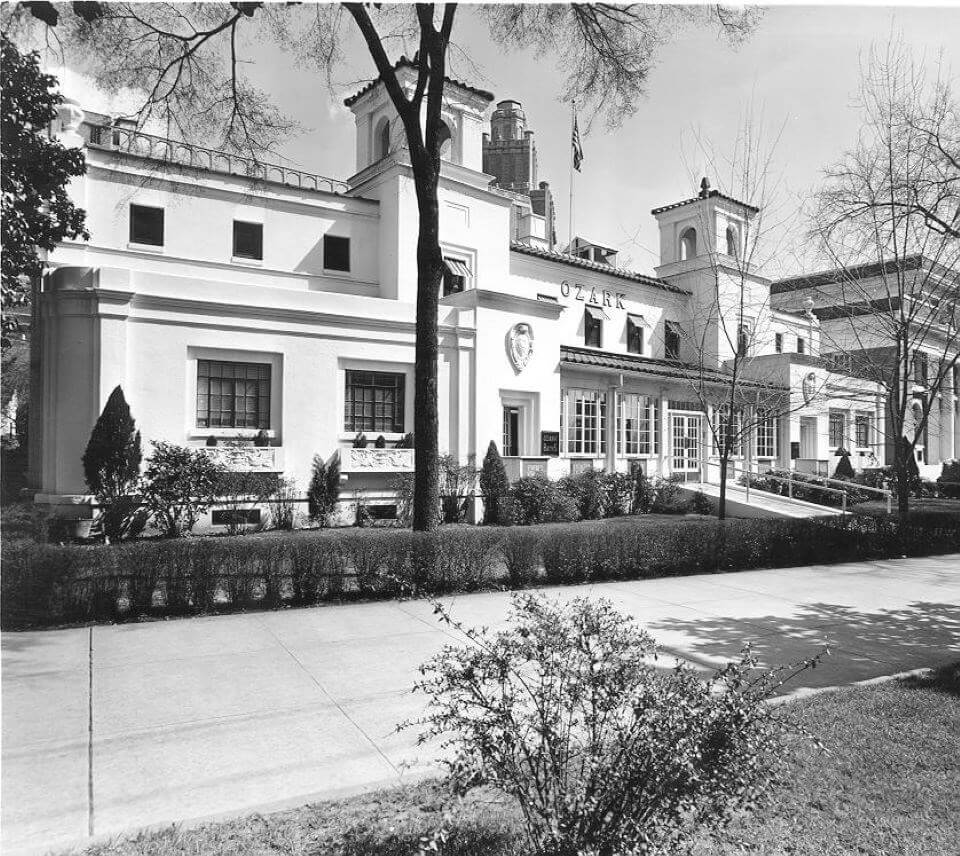
Built in 1922 in the Spanish Colonial Revival style, the bathhouse’s simple interior offered middle class guests “no-frills” bathing options. When heading in, note the cartouches on the facade – shields with The Tree of Life.
Today, the Ozark Bathhouse is being used as the town’s Cultural Center, and regularly hosts park events and exhibitions well worth your time to appreciate.
The Quapaw Bathhouse

From the name, you might expect something Native Indian about it – and you’d be right. This 1922 bathhouse, the longest on the Row, boasts a large mosaic-tiled dome over a decorative American Indian motif, and was named after the tribe that briefly owned the area after the Louisiana Purchase. It was built on the sites of two previous bathhouses, the Horseshoe and Magnesia.
This is the second of the two bathhouses on Bathhouse Row which still offers a chance to soak in the mineral waters, though you might count it more as a spa than a bathhouse, and the remodeling has sadly been done to an extent that you don’t really get a good sense of the age of the place once you’re inside.
Back in the day, the Quapaw was renowned for its basement, which gave soakers the chance to see the original source of the springs, where other more expensive bathhouses siphoned their water up to more elegant tubs and kept the source out of sight or underground. You can still see the source today through the safety of a window when you book a 20-minute session in the Quapaw steam cave.
If you want to soak in the hot mineral water here, you can either book a private bath or spend some (more affordable) time in the four public, spring-fed pools, all set at different temperatures – switching between hot and cold is a time-old way of improving your body’s circulation.
The Quapaw offers numerous different spa services, including massages, manicures and pedicures, facials, and waxing.
Hungry? Head to the Quapaw’s cafe for a light bite or smoothie.
Good To Know
Clothing is required throughout the property.
You can change and store your clothes in the locker room and will be given a key for your locker on a wristband – don’t lose it!
You must shower before entering the pools and carefully wash off all deodorants, lotions, and makeup (this protects the natural mineral balance in the water).
Families welcome.
Open: Every day, except Tuesday, from 10am – 6pm.
The Fordyce Bathhouse
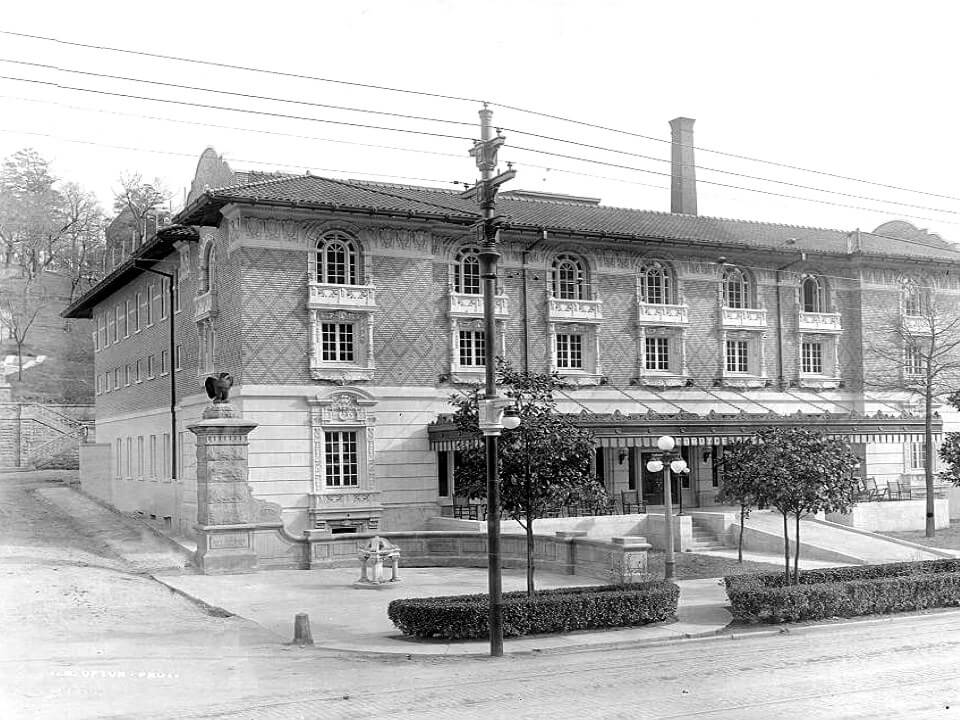
In its day, the Fordyce Bathhouse was the most elaborate and expensive bathhouse on Bathhouse Row, as well as the largest. Boasting three main floors, two courtyards, a gymnasium, a bowling alley, an Otis elevator and a basement with a view of the spring, it was constructed under the supervision of owner Sam Fordyce’s son John.
The elegant Fordyce Bathhouse is today home to the Hot Springs Arkansas Visitor Center and Museum, with rooms that have been restored to their original look.
Enjoy the lobby’s marble and stained glass transoms, the stained glass ceiling in the Men’s Bath Hall, and the ceramic fountain at one end of the lobby which once spouted out fresh spring water. Don’t miss out on the 9-minute movie that shows the traditional bathing routine.
The Maurice Bathhouse

Built in 1912, the elegant Maurice drew clientele with its unique basement therapeutic pool and 3rd floor lounge with a stone fireplace, painted mural, stained glass skylight, and view to impress.
It was designed by architect George Gleim, Jr., built by William Maurice to replace an existing Victorian-style building, and renamed the Maurice Bathhouse after his father Charles Maurice.
It was also popular for the fact it was the first and only Hot Springs bathhouse with a registered physical therapist who provided specialized treatment for those suffering with polio and other serious muscle and joint issues.
The Maurice has yet to be renovated.
The Hale Bathhouse
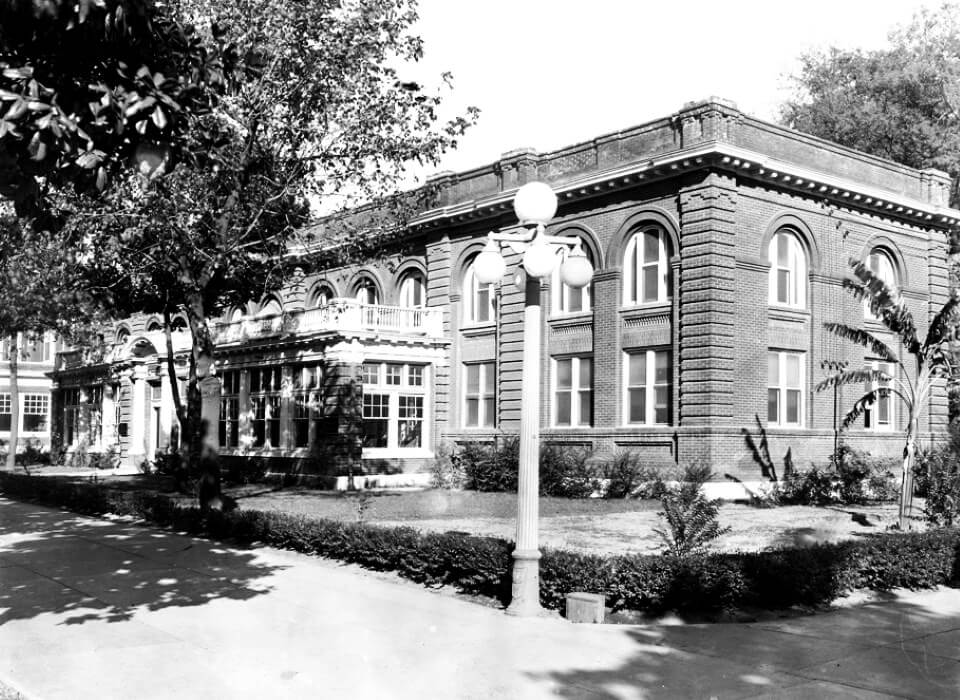
Built in 1892, Hale is the oldest surviving bathhouse on the Row, known as being glamorous and contemporary in its time, and offering visitors a sauna in a thermal cave carved into the mountainside and a tiled bath in the basement as of 1917. Guests would take in the sun in the lobby area, relaxing in rocking chairs.
The cave is no longer in use, and is a federally protected archeological site, while the Hale itself has been renovated into a boutique hotel with a restaurant. While the rooms are up to modern standards, the designers have managed to hold onto some unique historical touches.
Each room has its own thermal water soaking tub for your private bathing pleasure!
The Superior Bathhouse
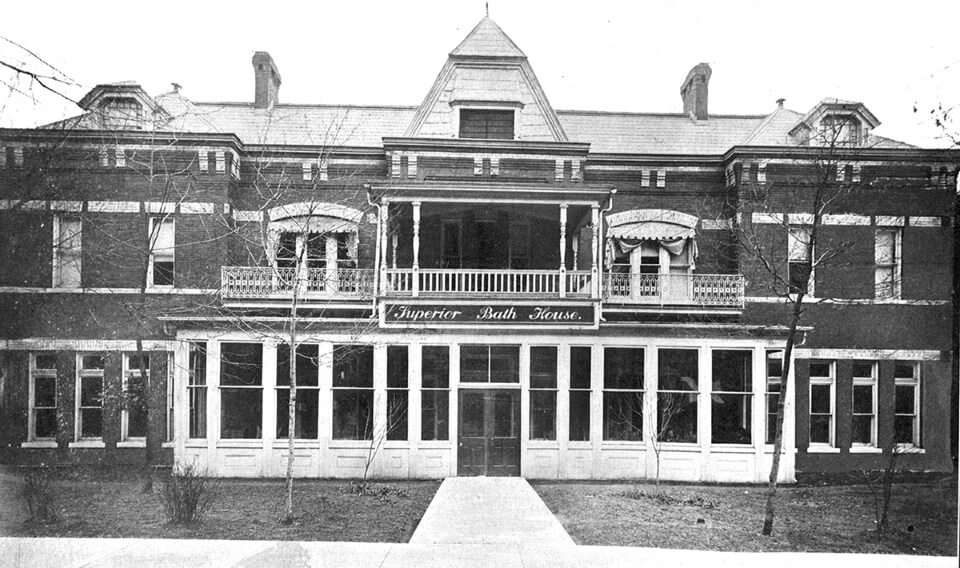
Despite the name, this 1916-built bathhouse was the smallest on Bathhouse Row, and offered visitors simpler soaks that were more affordable than its neighbors’ services. Today it is, of all things, a brewery!
This Hot Springs Arkansas Brewery is the only brewery in the United States located inside a National Park, and all the beer brewed there is uniquely made using the natural 144℉ spring water flowing below.
It was constructed on remains of the old Hale and Big Iron bathhouses, and a sunporch was added in 1916.
Where Can I Stay In Hot Springs Arkansas?
Our top choice would be a stay at the 9-room Hale. The beautifully and thoughtfully decorated rooms here each have their own soaking tub which you can fill to your ideal temperature with hot spring mineral water. Enjoy a complimentary breakfast in Restaurant Eden.
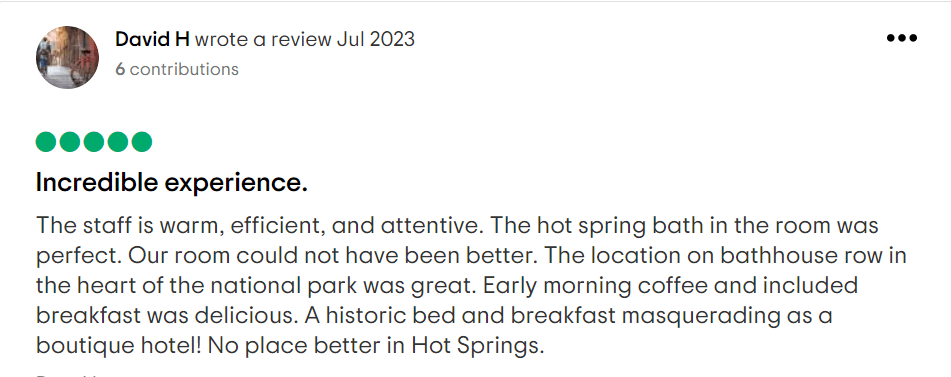
The nearby charming and old Arlington Resort Hotel & Spa is also recommended, and has a history of hosting such figures as Al Capone, Babe Ruth, Barbara Streisand and Franklin Roosevelt. If you can, Al Capone’s favorite – Room 443. They say the whole floor was rented out for his staff and bodyguards. Be sure to grab a drink at the bar too and step back in time. Note that the hotel is undergoing renovation works at the time of writing.
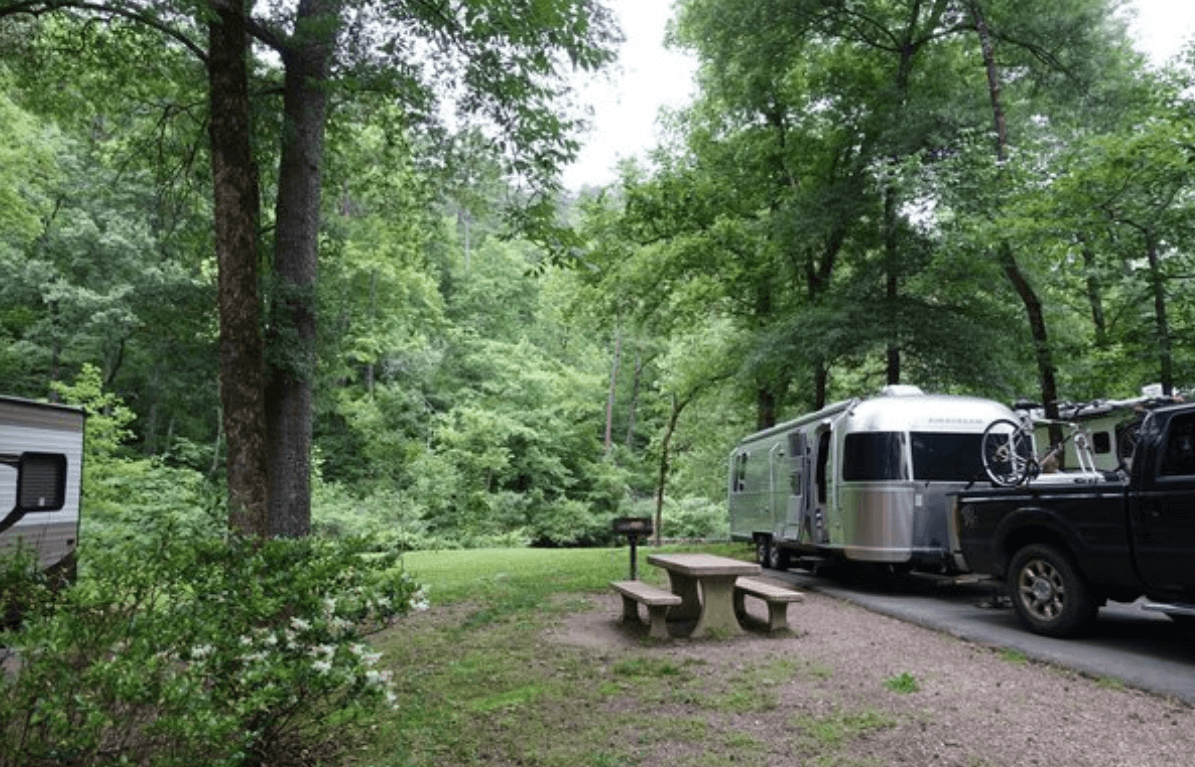
If you’re camping, head for the Gulpha Gorge Campground. All 40 sites there have full hookups- electric, water and sewer connections, a picnic table and grill. There are modern restrooms but no showers. Occupancy is limited to eight people/two vehicles per site. Reserve your spot on Recreation.gov.
What Else Can I Do In The Area?
Head up to Mountain Tower for a stunning view of the town.
Visit Arlington Lawn with its Hot Water Cascade.
Check out the Stonebridge Area, featuring historic items from the old Fordyce-Ricks estate.
Visit Whittington Park, built in the 1890s and today offering 26 miles of hiking trails, great views and beautiful forest scenery.
Zipline through the trees.
Disclaimer
While we at Traxplorio do our very best to give you the latest information about these hot springs sites, life happens, weather happens, and property owners happen. We always recommend you go to the official hot springs’ web page and/or the relevant state authority page to check conditions, times, and prices (where relevant) before you head out. Thanks for understanding, and enjoy your soak!

